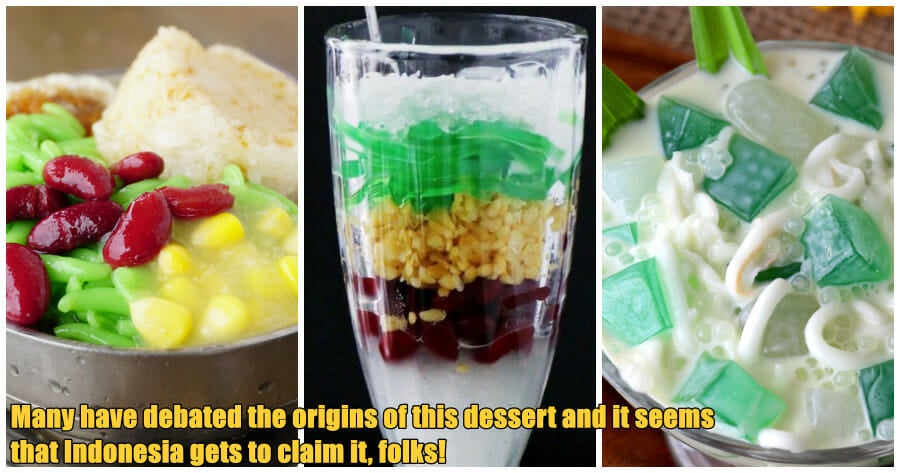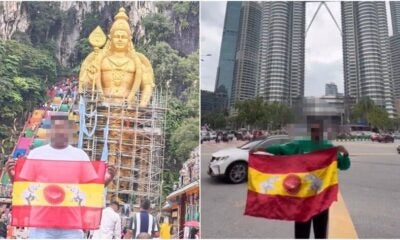Here’s some quick local and Southeast Asian culinary facts for all you foodies out there! Did you know that our beloved Cendol actually shares many similarities to other variations of the dessert across Southeast Asia (SEA)? It’s pretty unique how this 1 dessert has managed to blur borders!
Ask any Malaysian to list down some of our local desserts and surely Cendol will be mentioned.
This popular shaved ice treat (or drink) is also just as famously loved by surrounding countries, probably due to the fact that it’s main ingredients like rice, palm sugar, coconut milk and pandan leaves are commonly used.
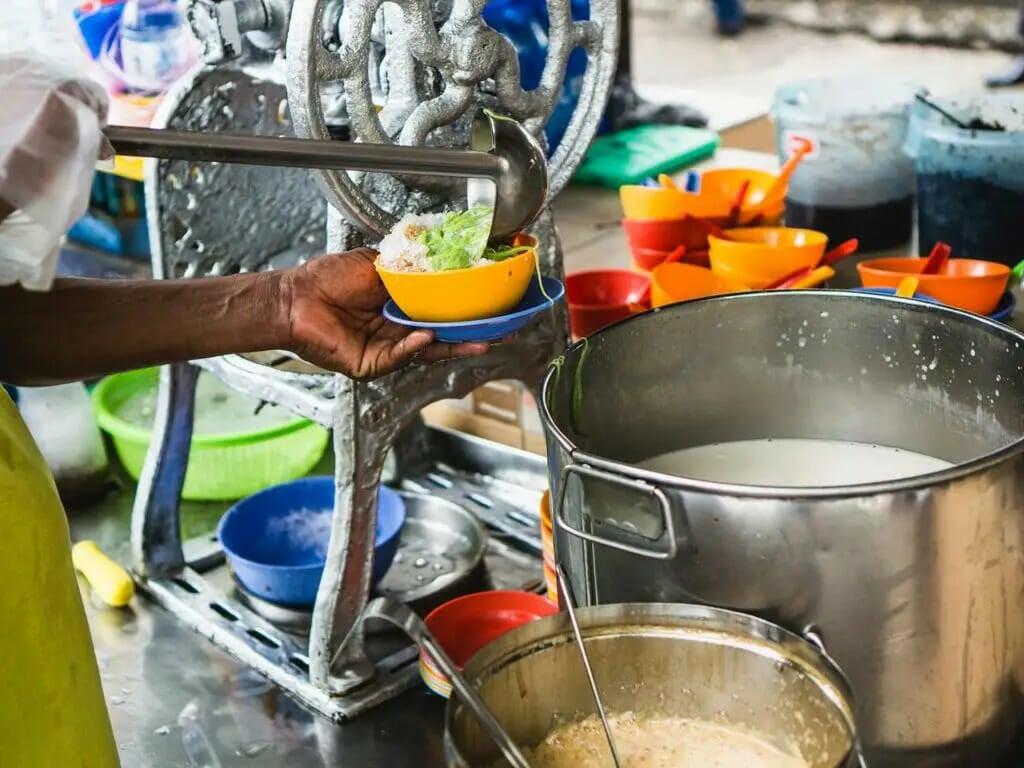
Scroll further to discover the uncanny similarities and different twists found among the many SEA variations of the Cendol!
1.Indonesia: Es Cendol
First up we have the Es Cendol from Indonesia. Many have debated the origins of this dessert and it seems that Indonesia gets to claim it, folks!
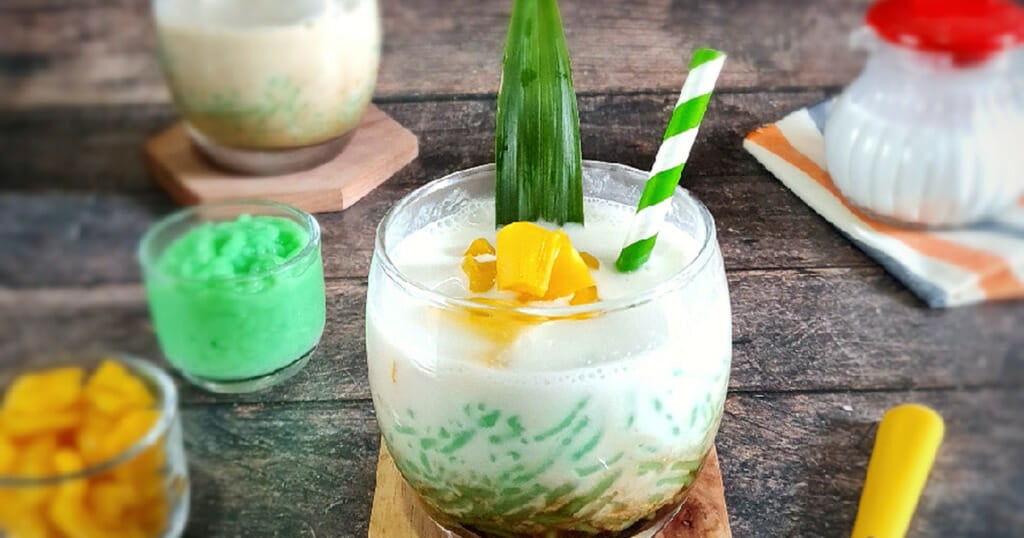
Research found that the first ever mentions of this dessert dates back to the 12th century of the Kediri Kingdom of Java. The Javanese name for the Cendol is actually Dawet and it’s served as a traditional drink during weddings.
Indonesian cendol usually comes in a thick drink form that only comprises of pandan jelly (made from rice flour), coconut milk and palm sugar. Another famous variation of Es Cendol is the one that has jackfruits on top for a more aromatic flavour.
2. Malaysia: Cendol
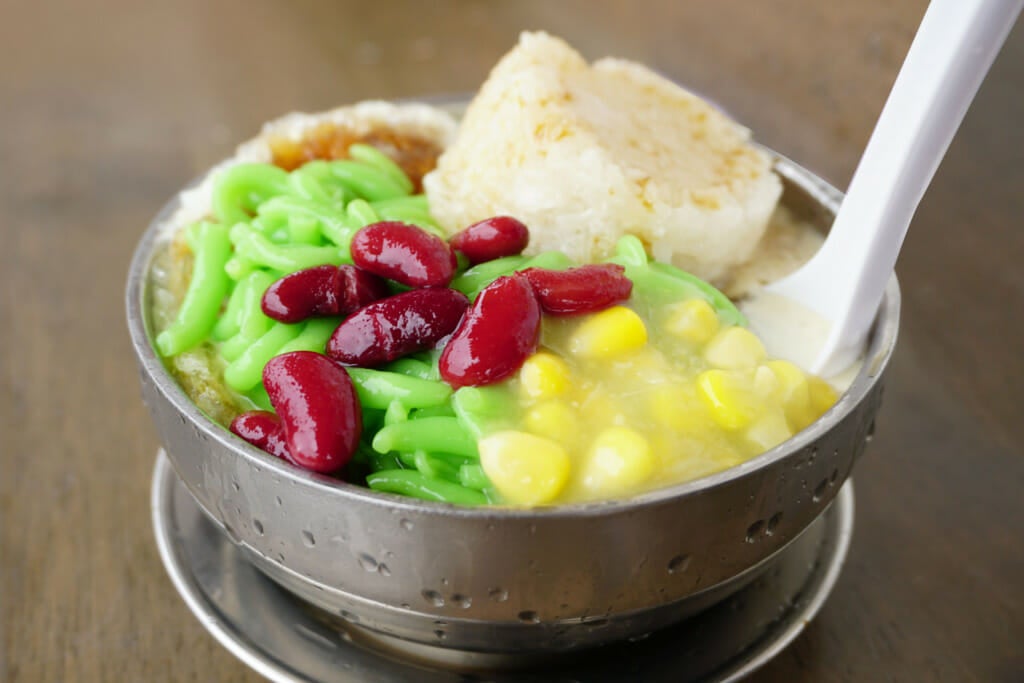
Malaysia’s cendol has the most topping options with red bean, sweet corn, durian, sticky rice, pandan jelly, jackfruit roasted nuts, tapioca pearls and of course durian as well!
Now the Malaysian cendol and the Singaporean one are basically the same, plus the Brunei version also shares the same name!
3. Singapore: Chendol
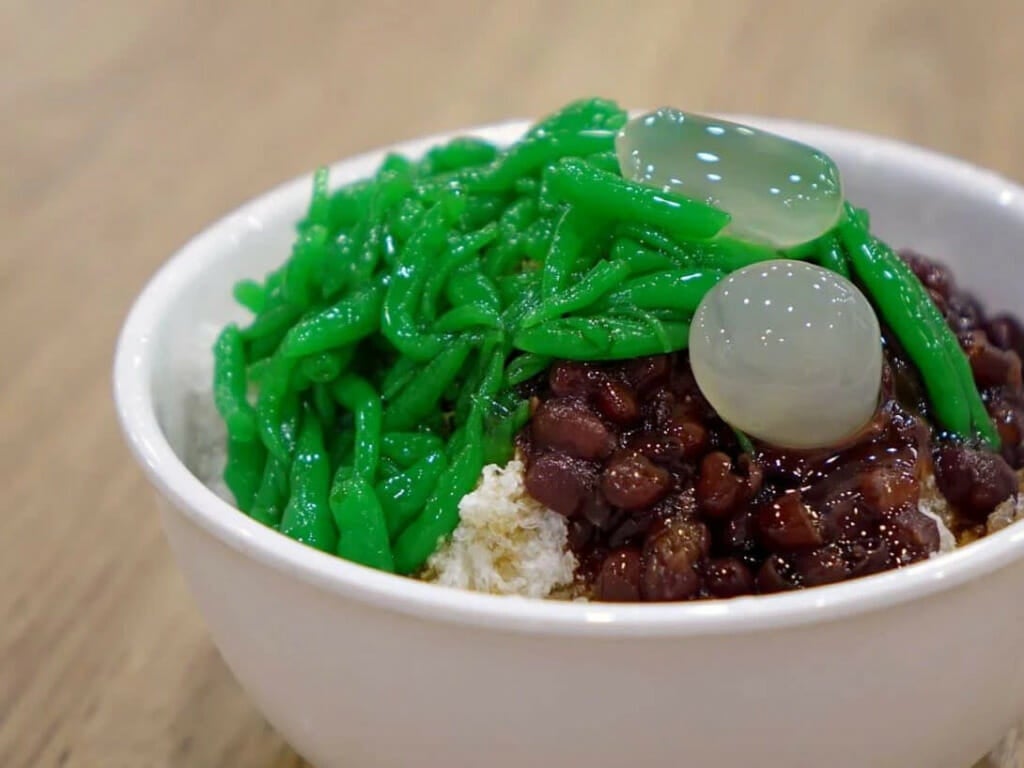
The biggest distinction between Singapore’s cendol and Malaysia’s is just that of the spelling… Singaporeans sometimes spell it as chendol. Singapore’s chendol also uses the signature gula melaka palm sugar just like we Malaysians love it!
4. Brunei: Cendol
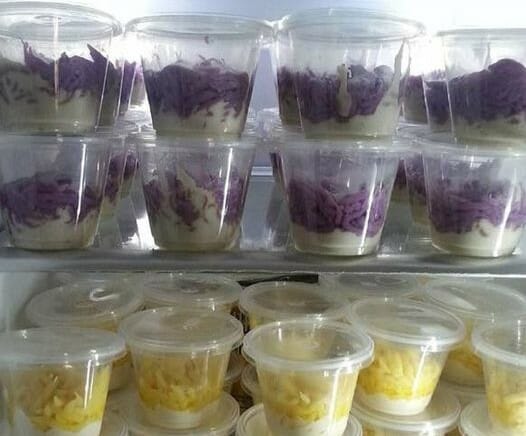
There’s really not much difference between Singapore and Malaysia’s cendol compared to Brunei’s version. Though out of all the countries only Brunei has a cendol version that incorporates yams.
5. Cambodia: Noum Lot
Cambodia’s Noum Lot is more of a rice pudding texture that also uses rice flour, water, pandan leaf extract, palm sugar and coconut milk. It has a thick consistency that’s achieved by cooking rice flour with water, pandan leaf extract, and white lime.
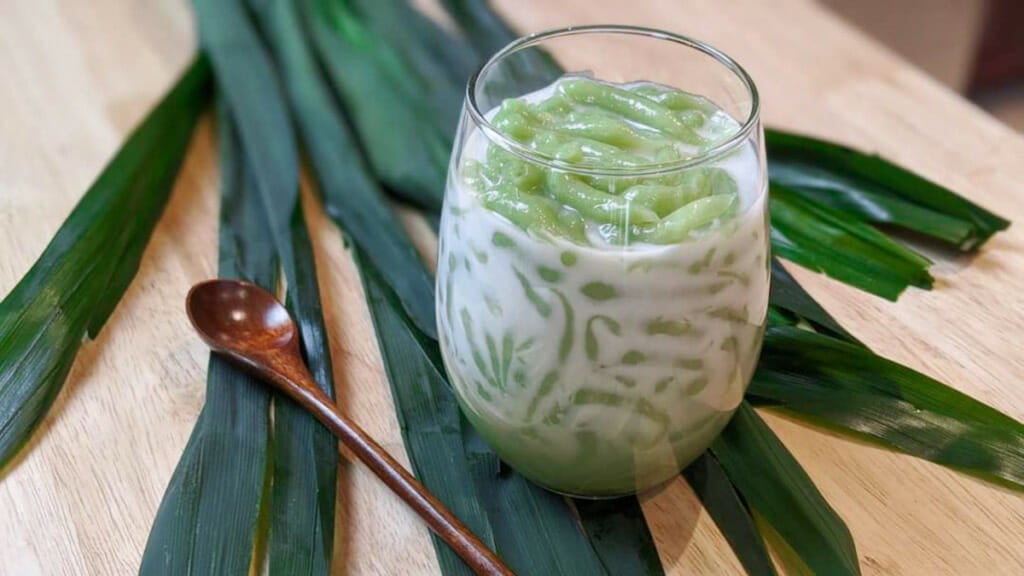
The resulting pudding-like mixture is strained, placed to a serving bowl, and then frequently drizzled with a sweet liquid made of hot coconut milk, palm sugar, and salty water! The use of lime definitely makes this one the more unique variation.
6. Laos: Nam Vahn Khao Lod Chong

The Laos version shares heavy similarities with Cambodia’s version but in more equal amounts of ingredients making it more light and refreshing. The focus of this version of the dish is the thick jelly with coconut milk, palm sugar and a little bit of salt and lime for taste.
7. Myanmar: Mont Lat Saung
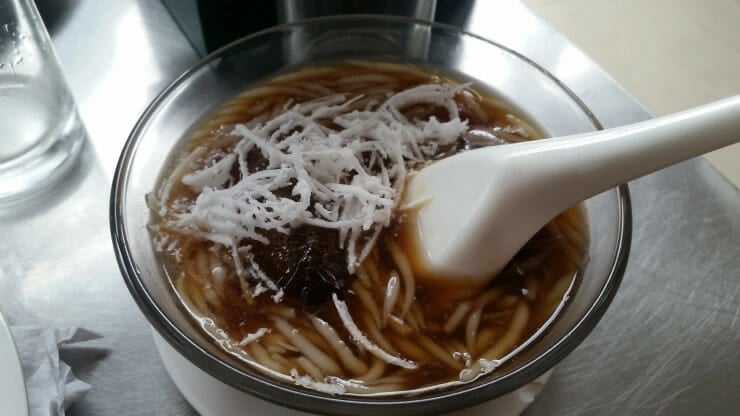
This Burmese dessert has a brown colour to it due to it’s heavy use of palm sugar. The colour of the jelly and sauces vary depending on the regions in Myanmar, those from Southern Myanmar prefer to eat white jelly and a jaggery caramel sauce, whereas those from the region around Yangon and Mandalay prefer to consume green jelly with ice cold coconut milk.
The “jelly” in this dessert is actually just tiny pieces of sticky rice that have been pounded and squeezed.
8. Philippines: Buko Pandan Salad
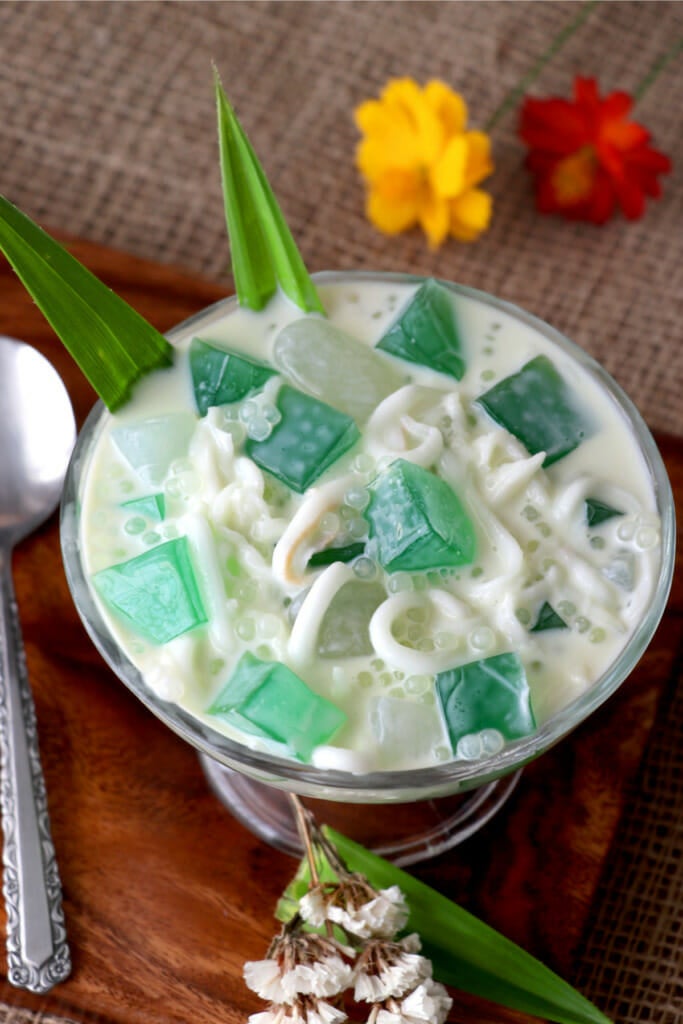
Gulaman cubes (a form of agar-agar), tropical palm fruits, and shredded young coconut are combined with sweetened cream to make Buko Pandan Salad (although it’s not actually a salad).
This traditional Filipino dessert is loved by many for it’s rich, creamy and chewy pandan flavours. It’s a dessert best served cold and is packed with fun textures with it’s many additions of jelly cubes, tapioca pearls, nata de coco. Guaranteed to satisfy your sweet tooth!
9. Thailand: Lod Chong
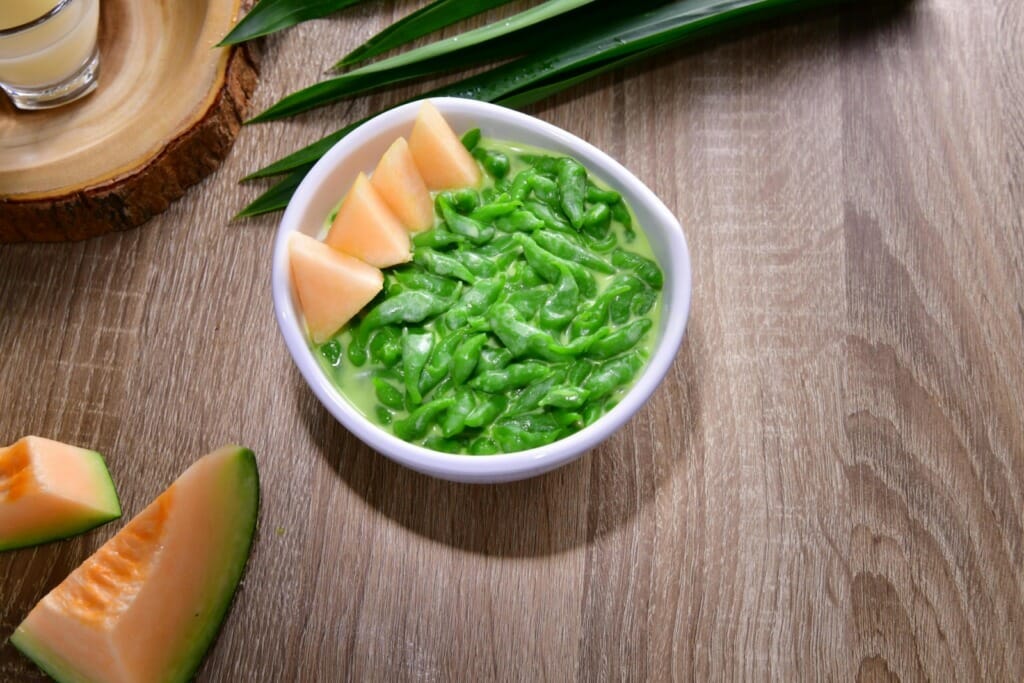
Next up we have Thailand’s version of Cendol which is called the Lod Chong in reference to the how the green pandan jelly is made. Lod means “through” and Chong means “hole” in Thai. The “lodchong press” is used to create the jelly by forcing a pandan custard through a hole.
This Thai dessert is made from pandan water, limestone water, rice flour, and mungbean flour and is commonly topped off with melons.
10. Vietnam: Che Ba Mau
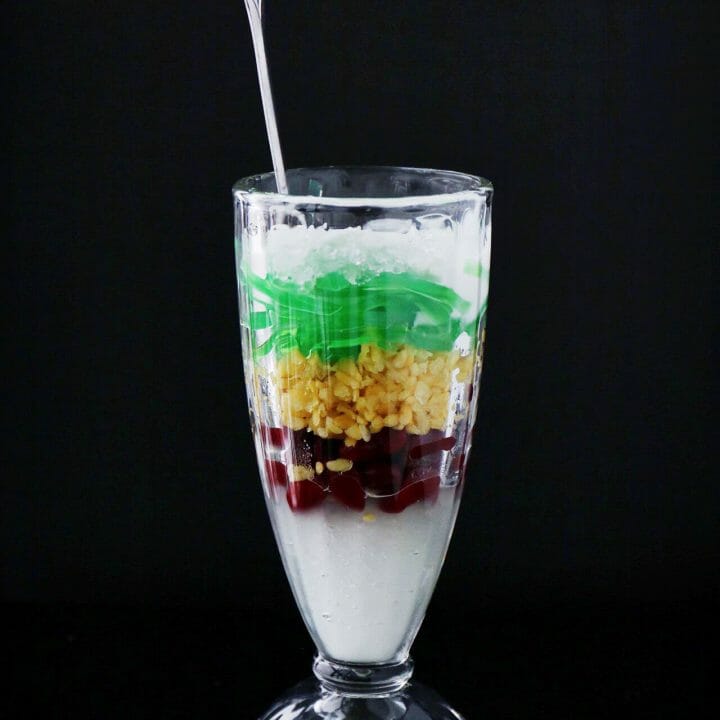
The Vietnamese dessert known as “chè ba màu” translates to 3 colour dessert. It’s a cool treat topped with ice slush, contrasted with layers of red beans, mung beans, pandan jelly, and coconut sauce. That sounds sooo good!
Given the heatwave we hope everyone in SEA at some point can enjoy a nice sip of this ever popular traditional Cendol to cool down. This common dessert deserves the appreciation, people!
Do you know of any other shared dishes that can be found across SEA? Comment below!
Also Read: CNN Lists Cendol in World’s Top 50 Best Desserts But Says It’s From Singapore

